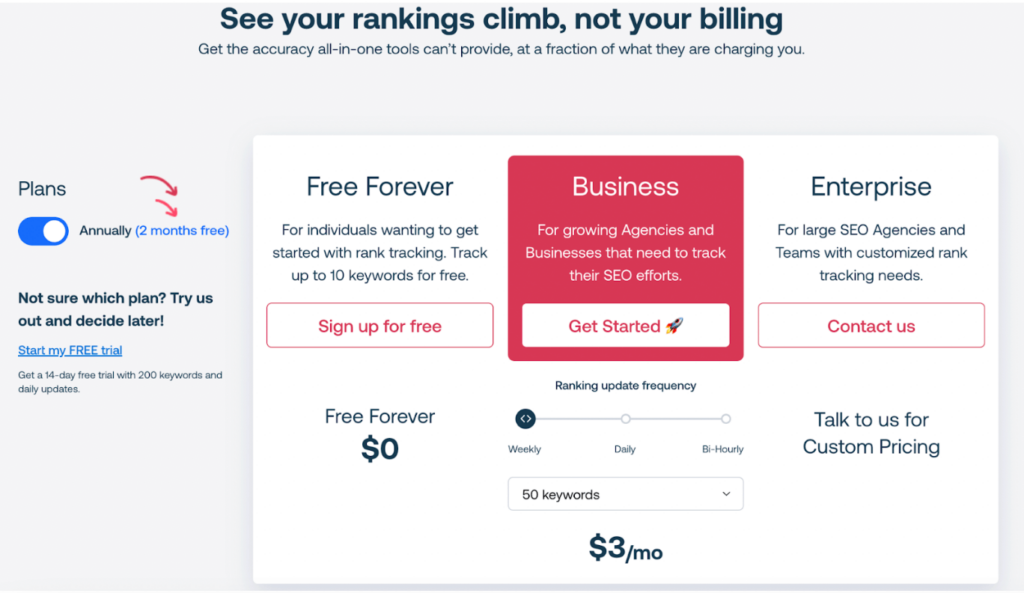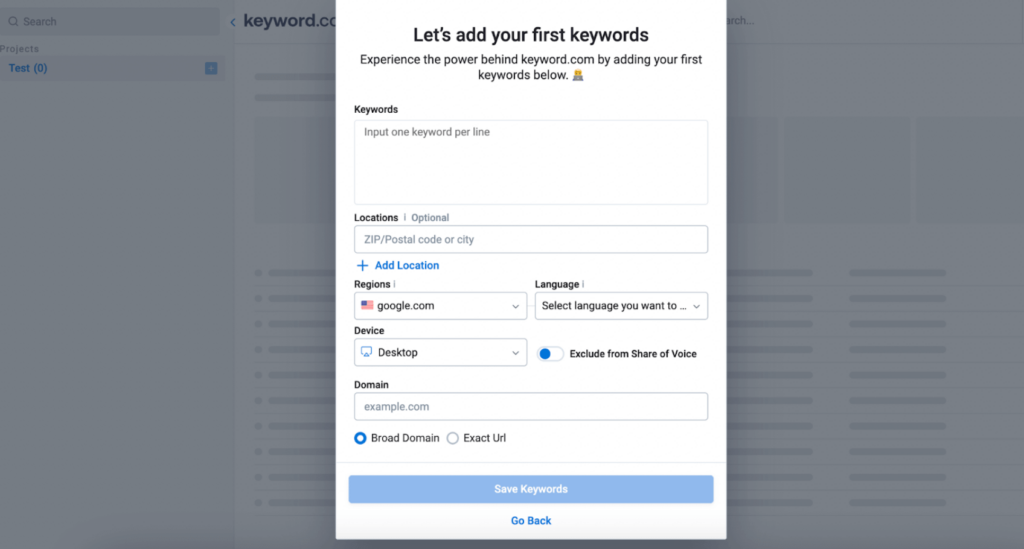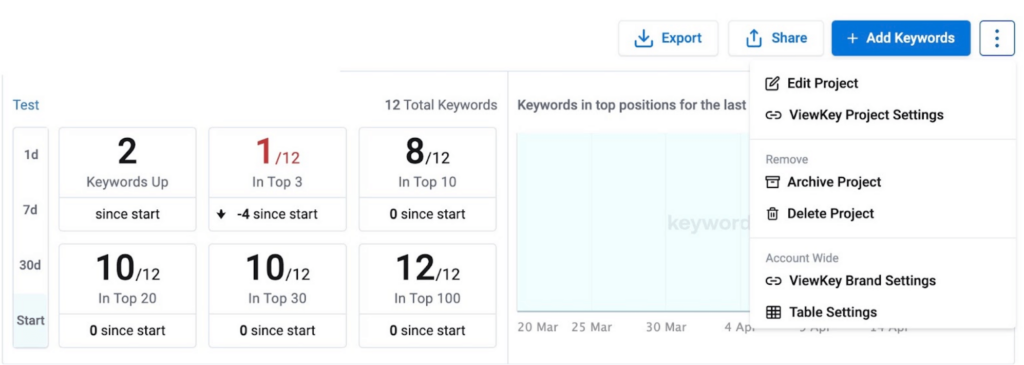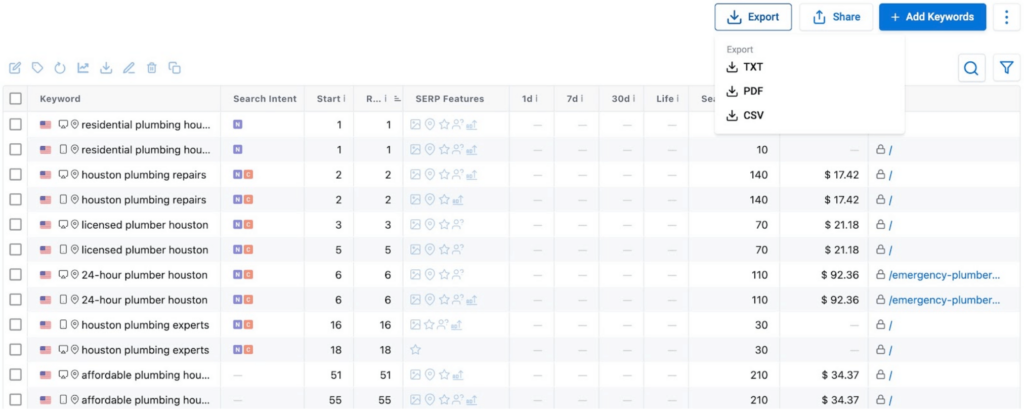When you’re running a business, showing up in local search results can make a big difference. But how do you know if your efforts to appear in those searches are working? That’s where tracking your local SEO results comes in.
In this article, we’ll show how to track local search results accurately with Keyword.com, plus tips for boosting your local SEO performance.
What is Local SEO Tracking?
Local SEO tracking means monitoring how your website ranks for local keywords in a particular geographic area. For example, let’s say you run a coffee shop in Houston. Monitoring how you rank for search terms like “best coffee shop in Houston” and “where can I buy coffee in Houston” are examples of local SEO monitoring.
Local SEO tracking helps you understand how well your business is ranking in local search results and how effectively you’re attracting local customers in that area online.
Why Track Local SEO Results?
Monitoring your website’s local SEO performance allows you to:
1. Discover Keyword Threats and Opportunities Early
When you closely monitor local SEO performance, you’ll see SERP changes in real-time and use these insights to improve your SEO strategy.
Let’s say you notice that you’re losing rankings for an important keyword. In that case, you can optimize the affected page — by adding new content, doing on-page SEO, or building backlinks — to improve its ranking performance.
In the same way, if you notice that a blog post ranks high for a search term, you can build a cluster targeting similar intent-based keywords to build your website’s authority for the main topic.
Learn more: How to identify keyword opportunities and threats.
2. Monitor Competitor Performance
Local SERPs are very volatile because a large number of businesses are targeting a handful of relevant keywords. For example, “coffee shop in downtown” or “plumber in [city]” are likely to have many businesses competing for visibility from a small pool of local customers in that geographical location.
Competing brands are constantly working to outrank you, so you need to keep an eye on their SEO performance. Otherwise, you’ll wake up one day to discover that you’ve fallen off the SERPs for your money-making search terms.
With local SEO tracking, you can see when a competitor starts to gain traction for relevant keywords and adjust your strategy accordingly. You can also identify areas where you can outperform competitors and capitalize on ranking opportunities quickly.
Learn more: How to track your competitors’ keyword performance.
3. Measure the ROI of Your Local SEO Efforts
Local search engine optimization is usually time-consuming and expensive. Beyond the costs of maintaining a technical SEO team, you also need to invest in high-quality content creation and backlink building.
Surely, you don’t want your investment to go to waste. It only makes sense to track if they yield the expected results — and that’s what local SEO monitoring is all about. It will show you which SEO efforts are yielding results and the ones that are drawing you back.
For example, imagine you own a bakery in downtown Chicago and have been working on improving your local SEO to attract more customers. You’ve invested in optimizing your Google My Business listing, building local backlinks, and creating locally relevant content.
After a few months, your tracking data shows that your bakery’s website has climbed to the top 3 positions on Google for key phrases like “bakery in downtown Chicago” and “best cupcakes in Chicago.” Correspondingly, you’ve seen a 40% increase in website traffic from local search queries and a 25% increase in online orders.
If you spent $2,000 on your local SEO campaign over these months and the increase in online orders led to an additional $6,000 in revenue, it translates into positive ROI on your efforts.
Learn more: What is SEO ROI, and how do you measure it?
How to Set Up Local SEO Tracking with Keyword.com
Keyword.com is a local rank tracker that you can use to monitor your local SERP performance. You can track keyword rankings for specific cities, even down to the zip code level, and view a live version of the search result pages without using VPNs.
Follow this step-by-step guide to set up local keyword tracking in Keyword.com.
Step 1: Log into your Keyword.com dashboard. If you don’t have a Keyword.com account, you can sign up for free.

Step 2: Add the local keywords you want to track to your Keyword.com dashboard. You can also import them from an external data source, such as an Excel sheet. For this walkthrough, we’ll input the keywords directly.

Step 3: Add the keywords and preferred tracking options. Since we’re setting up local tracking, we’ll include the specific city where we want to monitor keyword performance. After that, just enter the website URL where you want to track the keywords. This can be your website or a competitor’s.

Step 4: After filling out the form, click “save keywords” to view your customized local rank tracking dashboard. It will take a few minutes for the dashboard to update with real-time data. Once it’s ready, you’ll see a summary dashboard showing changes in keyword ranking over time.

You’ll also see a detailed breakdown of each keyword’s performance, including the SERP position, search intent, volume, cost per click, and SERP features.
Step 6: You can add and remove keywords as needed, export the data for external use, or share it with team members and clients in a few clicks. Your local keyword ranking dashboard will refresh weekly, providing updated ranking data. However, you can upgrade to our paid plans if you prefer daily and bi-hourly refresh rates.

Related: How to set up keyword tracking.
Tips for Improving Your Local SEO Performance
Now that you know how your business ranks for different local keywords, here are some tips for improving your local SEO performance, outranking competitors, and driving traffic from a relevant audience.
- Optimize your Google My Business (GMB) profile: claim and verify your GMB listing, ensuring that all information is accurate and up-to-date. This includes your business name, address, phone number, website URL, and business hours. Then, add high-quality photos and select relevant categories that best describe your business. For more impact on your business’s local SEO, encourage satisfied customers to leave positive reviews on your GMB profile, social media platforms, and other relevant review sites. You can pull and display positive reviews on your website using a social media aggregator like Juicer.io.
- Optimize your website for relevant local keywords: identify important keywords related to your business and integrate them naturally into your website content, meta tags, headings, and URLs. Include location-specific terms in your content to signal to search engines that you serve a particular area. For instance, “best coffee shop in Boston.”
- Create local content: develop content that is relevant to your local audience, such as blog posts, articles, or videos addressing local events, news, or interests. This helps with SEO and establishes your business as a valuable resource within the community.
- Obtain local citations: ensure your business information (name, address, phone number) is consistent across all online local directories, citation sites, and social media platforms. This consistency helps search engines trust the accuracy of your business information.
- Earn backlinks from local websites: seek opportunities to acquire backlinks from reputable local websites, such as local news outlets, community organizations, or industry associations. These backlinks can significantly boost your local SEO authority.
Stay on Top of Local Search Visibility with the Right Tracking Tools
Local SEO isn’t a one-and-done effort; it’s an ongoing process of monitoring, adjusting, and staying competitive in your area. Whether you’re tracking shifts in local keyword rankings, watching how competitors move in the SERPs, or measuring the ROI of your optimizations, having the right tracking system in place makes all the difference.
That’s where Keyword.com comes in. Our local rank tracker gives you reliable, zip code–level data on your keyword performance, and you can also monitor AI search visibility to see where your business shows up in AI-generated answers.
With weekly (or even daily) updates and an easy-to-use dashboard, Keyword.com helps you stay ahead of the curve in local search. Try it for free and see how your business stacks up in your city.